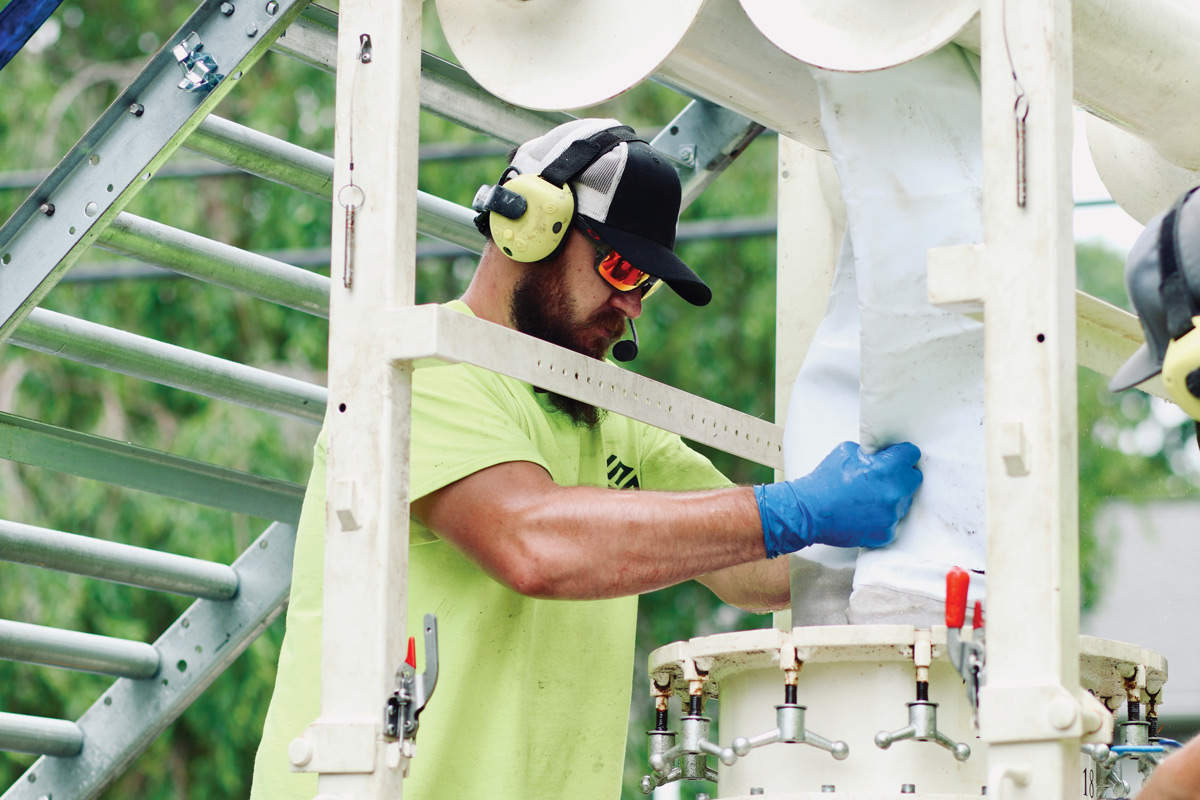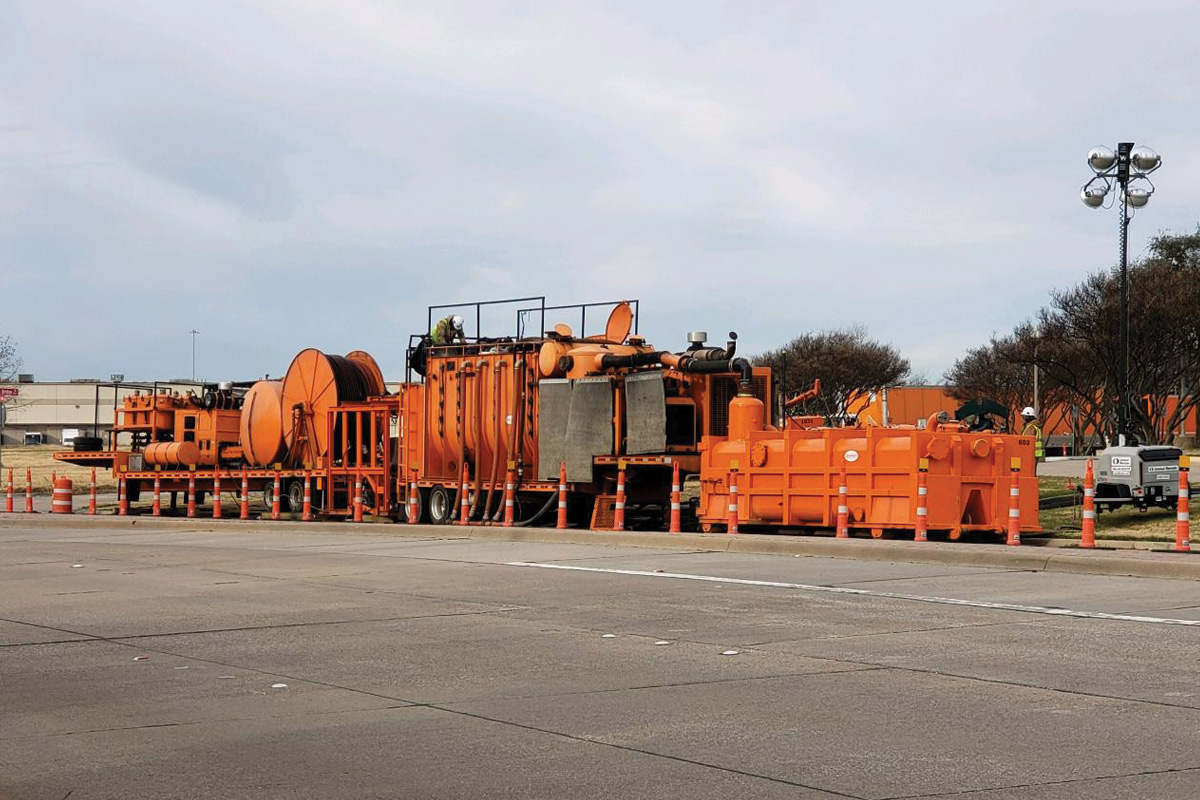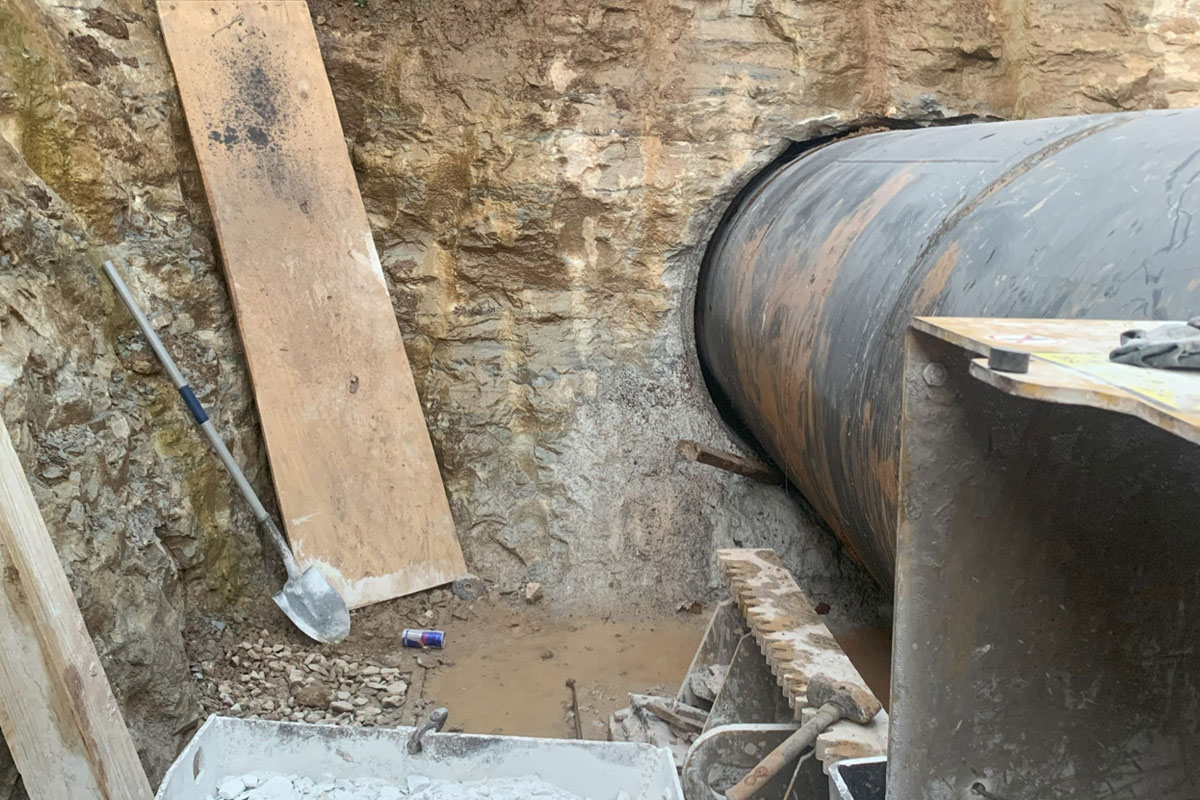
An Eye on Spray-Applied Pipe Lining
CUIRE and Nukote Coating Systems International Test Polymeric Spray Applied Pipe Lining Materials for Gravity and Pressure Applications
Spray-applied pipe lining (SAPL) is applied inside of a pipeline for either corrosion protection, or to increase the load bearing capacity of existing pipelines, or to create a new standalone polymeric pipe within the existing pipe. The materials used for SAPL include two broad categories of cementitious and polymeric (polyurethanes, and polyureas). Cementitious products are categorized as rigid and polymeric materials including polyurea, polyurethane, and epoxy are categorized as flexible. Table 1 depicts the main characteristics of these two materials. Figure 1 illustrates a polymeric installation process.
Polymeric spray-applied pipe lining is a new application to structurally renew deteriorated gravity and pressure pipelines. Nukote Coating Systems International (NCSI) is a leading provider of coating and liner products globally, involved in both the chemical formulation and robotic application equipment utilized. NCSI has a proprietary two-component liner product called Nukote PP300, which is used for structural renewal of buried pipelines. NCSI, in collaboration with the Center for Underground Infrastructure Research and Education (CUIRE) at the University of Texas at Arlington, is testing and evaluating the structural properties of Nukote PP300.
In this research project, the capability of Nukote PP300, for both gravity and pressure pipes renewal, are considered. Full-scale evaluation is performed for gravity pipes through soil box testing, with the results obtained defining the structural capability of the liner. Pressure pipeline liner performance is tested for buckling and hole spanning under internal pressure and head loss from friction factors at various flow rates. This article provides a summary of these testing operations.
To read more, follow this link to download a copy of the 2021 Pipe Relining Guide.




